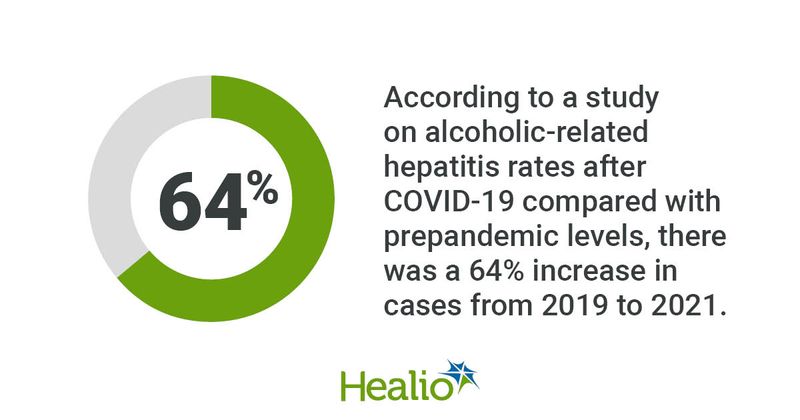Alcohol-related hepatitis soars during pandemic, particularly in women, young adults
WASHINGTON — The number of cases of alcohol-related hepatitis increased by more than 60% from 2019 to 2021 in three California hospitals, with women and young adults most affected, according to research presented at The Liver Meeting.
“In the earlier part of the pandemic, we had noticed a rise in admissions for alcohol-related hepatitis,” Aalam Sohal, MD, a hepatology fellow at the Liver Institute in Seattle and resident physician at the University of California, San Francisco – Fresno, said during a media briefing. “We wanted to assess through the latter part of the pandemic whether the rise was transient or has gone back to pre-pandemic levels.”

Sohal and colleagues conducted a retrospective chart review using an electronic medical records system to assess the number of alcohol-related hepatitis cases among patients who presented to three community hospitals in Fresno, California, from 2019 to 2021. They included 547 patients, comparing demographics, clinical course and outcomes.
Investigators reported that the number of cases increased from 131 in 2019 to 201 in 2020 and 215 in 2021 — 53% and 64% increases, respectively. In addition, the number of young patients, aged younger than 40 years, increased from 30 in 2019 to 61 to 2020 and 71 in 2021 — 103% and 136% increases.
Results also showed the number of admissions of women increased from 24 in 2019 to 55 in 2020 and 67 in 2021 — 129% and 179% increases. From 2019 to 2021, the number of deaths increased from 20 to 26, and rehospitalizations within 3 months jumped 4.45 times from 18 in 2019 to 80 in 2021.
“This increase seen in our three-hospital system in Fresno, California, might be reflective of a larger national problem and further studies are needed at a national level to assess the overall burden of this disease,” Sohal said. “We believe that urgent public health interventions are needed at community, state and national levels in order to curb this disease.”

